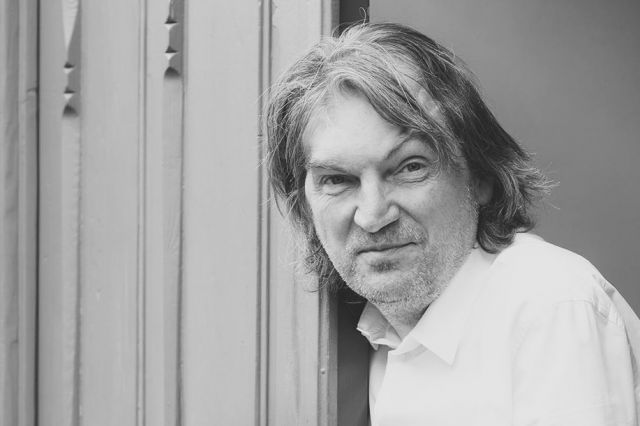Concept/content
Entering the artistic space of Fred Eerdekens places the spectator in a semantic landscape in which what one had thought of as stable meanings are continually twisted and turned. What better way to figurize this than by letting the spectators themselves ‘twist and turn’ in trying to make sense of the objects. In spiralling around the objects, they in fact become direct figures of the play of logic that rules the objects. After the linguistic turn, and in the wake of post-structuralist thought, the topography of our mental landscapes has become increasingly intricate. The work of Fred Eerdekens attests to this fact and it provides a conceptual map of this, in many places still unknown territory.
Hanjo Berressem, “Differentials and diffractors. Objects by Fred Eerdekens”
—
Altijd opnieuw ontfermen zijn werken zich over de vraag hoe taal zich tot de wereld verhoudt, maar net zo goed over de vraag hoe wij in die wereld staan. Zijn werken zijn een uitgebreide inspectie, een inquisitie -om een hardvochtigere term te gebruiken-, van het materiaal (de taal) waarmee we de wereld proberen te doorgronden. Indien er een volmaakt huwelijk was tussen taal en wereld, zouden ze elkaar perfect spiegelen. Dit is echter niet het geval, altijd is er sprake van interpretatie, afhankelijk van de verschillende (letterlijk en figuurlijk) ingenomen standpunten. Daarenboven is er een verschil tussen betekenis en verwijzing. Een bewering geeft een beeld van de werkelijkheid, maar is slechts een verwijzing. Uit zo’n beeld kan je niets afleiden over de wereld. Men moet het beeld als het ware naast de wereld leggen om te zien of het klopt, waar is of niet. Licht, shaduw, materialiteit en taal vormen een hechte eenheid die de schijngestalten van de werkelijkheid benaderen.
Stef Van Bellingen, in “Hot Re-Strike” cat.
—
Agile in their ability to make a leap (of faith), Eerdekens’s shadows – as well as the other kinds of projected images that he also creates that are as much shadows as his shadows are images – may never disconnect phisically from the objects that cast them, but they have been given tremendously potent “proxy” by their having been transformed into “shadow-images” of significant language. Because Eerdekens is a visual artist who makes objects and/or situations that in turn transform their shadow-images into their “own” language – placing a word or phrase on display at the edge of a table, or on the wall or floor, etc., making them much more than mere commentary – his works fully participate in the lenghty discussion about where we have to go and what we have to do to find meaning in language, not to mention the particular language we often find in art.
Is the meaning of a word in the word itself or in its surroundings? Eerdekens’s works suggest that both answers are viable, and, even more contradictorily, both are viable precisely because they exist simultaneously. … Language is inside and outside of Eerdekens’s work all at once, without simple resolution. We shouldn’t be too surprised then that his work is also inside and outside of language – again, all at once.
Terry R. Myers, “My sight is an invitation to look somewhere else: The work of Fred Eerdekens”
—
Tout ce qui n’apporte rien d’essentiel de l’intérieur à la représentation totale n’est qu’ajoute extérieure, est un parergon. Le parergon grec signifie littéralement “ce qui est en dehors de l’oeuvre”. Ainsi que le discours philosophique, l’art moderne a liquidé le paregon, et ceci jusqu’à une époque fort récente, au rang de superflu. Tout ce qui semblait appartenir au parergon était considéré comme un ballast, inutile, un gangue cachant le sens profond de l’oeuvre d’art, ou qui du moins en détournait l’attention. Le parergon nuit à l’encontre du vrai sens de l’oeuvre d’art.
La philosophie de Derrida n’interprète plus ce ‘contre’ en tant ‘qu’opposition’ de l’oeuvre, mais en tant ‘qu’à côté’, près de ce qui s’appuie ‘contre’ l’oeuvre. Ce qui est situé en dehors de l’oeuvre n’y fait plus opposition. Le signifiant et l’absence de signification forment les ingrédients de l’oeuvre d’art. Pour Derrida le sens de l’oeuvre n’y est plus caché et ne peut donc pas être cerné par l’absence de signification.
L’art de Fred Eerdekens se meut dans le champ de tension existant entre l’ergon et le parergon, entre l’oeuvre et ce qui se situe au dehors d’elle, entre la signification et ce qui n’apporte plus rien à celle-ci. L’absence de signification n’est plus du tout poussée vers le bord, vers le cadre. Il n’y a même plus de cadre, seulement l’ombre du support. L’absence de signification est integrée à l’oeuvre d’art.
Jan Kenis, “En dehors de l’œuvre, ‘hors d’œuvre’, dans l’œuvre de Fred Eerdekens”

